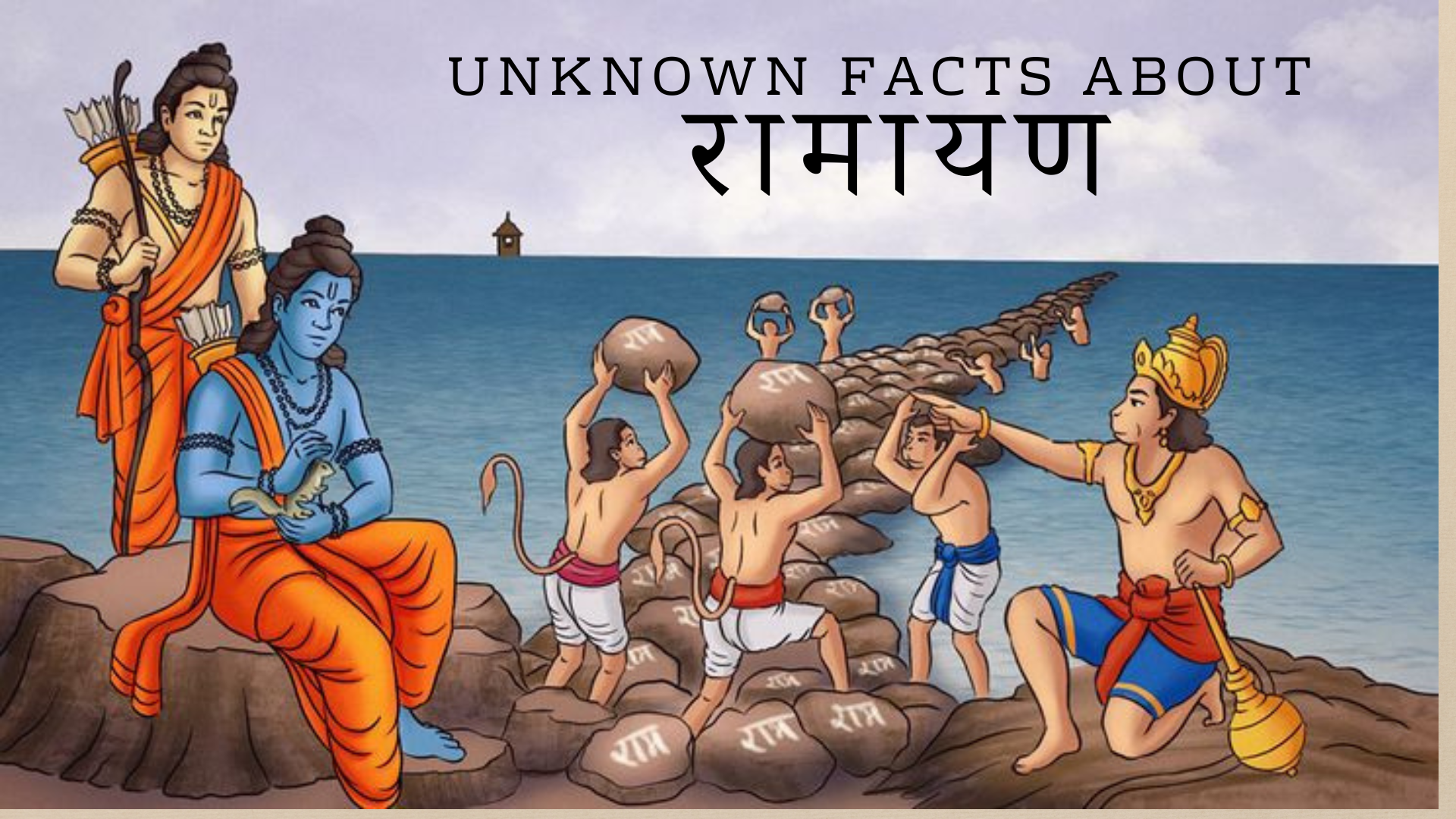Introduction: The Ramayana, one of the most renowned ancient Hindu epics, has been cherished for centuries as a story of love, devotion, and righteousness. Passed down through generations, it has captivated millions with its divine characters, moral teachings, and epic battles. However, beyond the well-known narrative, there exist hidden gems and lesser-known aspects of the Ramayana that shed new light on its intricacies. In this blog, we will embark on a journey to explore some fascinating unknown facts about the Ramayana, revealing a deeper understanding of this beloved epic.
Multiple Versions and Variations: The Ramayana has not been confined to a single version. Over time, numerous retellings and adaptations have emerged across different regions and languages, such as the Valmiki Ramayana, the Tulsidas Ramayana, the Kamba Ramayana, and more. Each version presents unique interpretations and additions, showcasing the dynamic nature of this ancient epic.
Valmiki's Role: While Valmiki is widely regarded as the author of the original Ramayana, there is an intriguing legend associated with his transformation from a bandit to a revered sage. It is believed that Valmiki was initially a highway robber named Ratnakara. However, a transformative encounter with the sage Narada inspired him to renounce his violent ways and embark on a spiritual journey, eventually composing the epic Ramayana.
Hanuman's Childhood Leela: Hanuman, the devoted devotee of Lord Rama, is revered for his immense strength and unwavering loyalty. However, his childhood was filled with playful pranks and mischief. It is said that Hanuman once mistook the sun for a ripe fruit and attempted to swallow it. This incident led to an intense battle with Indra, the king of gods, who wielded his thunderbolt against Hanuman. Impressed by Hanuman's bravery, Indra granted him a boon of immortality.
Ravana's Penance: Ravana, the primary antagonist of the Ramayana, is often portrayed as a formidable demon king with ten heads. However, there is a lesser-known aspect of his character that adds depth to his persona. Ravana was a great devotee of Lord Shiva and performed intense penance to obtain immense power. In his pursuit, he even offered his own heads as sacrifices. Impressed by his devotion, Lord Shiva granted him boons that ultimately contributed to his downfall.
Sita's Agni Pariksha: The episode of Sita's Agni Pariksha, where she is asked to prove her purity by walking through fire, has been widely debated. In some versions of the Ramayana, Sita voluntarily undergoes the ordeal to prove her fidelity and purity. However, in other interpretations, Sita's fire walk is not mentioned at all, highlighting the variations in the retellings of this significant event.
The Lost Chapter: The Ramayana originally consisted of seven books or Kandas. However, there is an obscure and often neglected section called the "Uttara Kanda" or the "Seventh Book." This book narrates the events that unfold after Rama's triumphant return to Ayodhya. It delves into the banishment of Sita, the birth of Lava and Kusha, and Rama's final departure from the mortal realm. The inclusion of this chapter remains a topic of discussion among scholars.
Conclusion: The Ramayana continues to enthrall and inspire people across the globe. By unearthing these lesser-known aspects, we gain a richer understanding of the epic's vastness and its enduring relevance. The multiple versions, Valmiki's transformation, Hanuman's playful nature, Ravana's devotion, the Agni Pariksha debate, and the hidden "Uttara Kanda" contribute to the tapestry of the Ramayana, showcasing its depth and complexity. Exploring these lesser-known facts invites us to delve deeper into the timeless wisdom and profound teachings embedded within this treasured epic.


